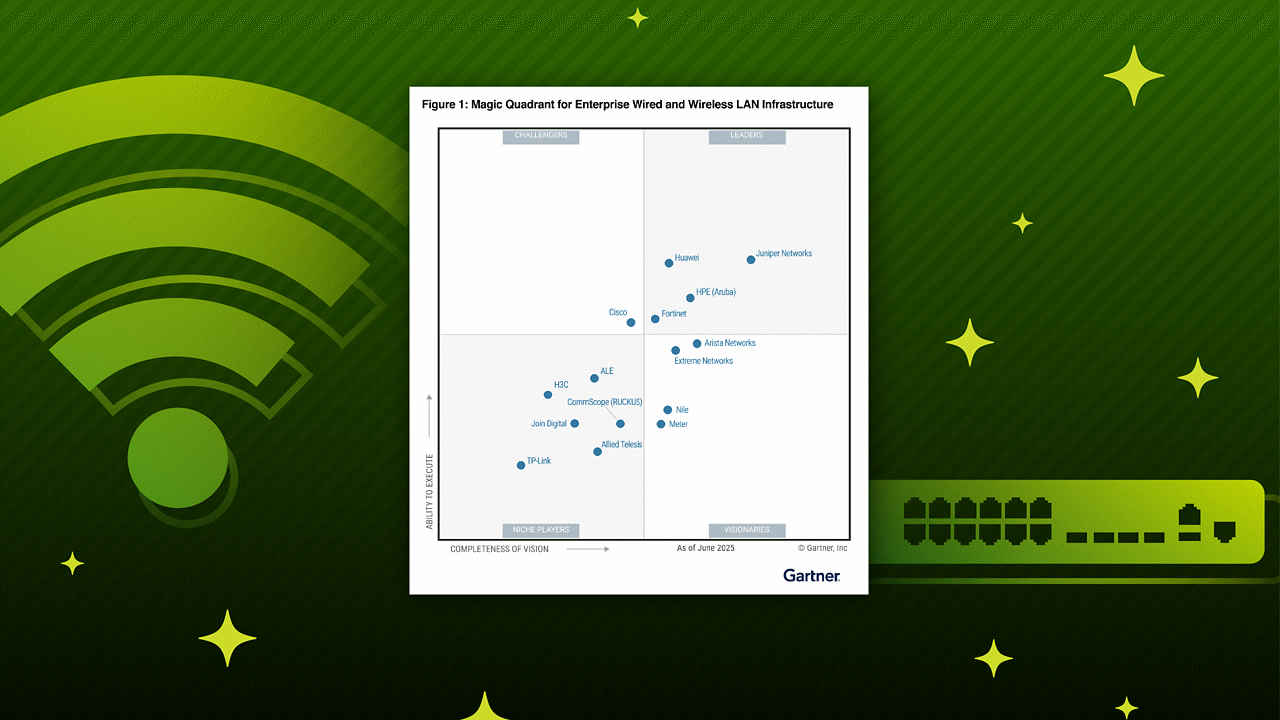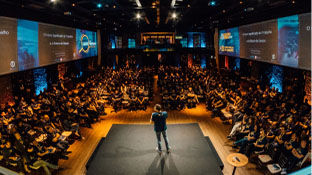Customer Success Story

LOFAR telescope surveys vast areas of the low-frequency radio sky
ASTRON, the Netherlands Institute for Radio Astronomy, is on the forefront of highimpact discoveries. The research institute’s work focuses on measuring the atmospheric conditions of earth-like, extra-solar planets to search for signs of life, studying the origins of gravitational waves and the evolution of galaxies from birth to collapse, and measuring space weather events to protect the earth from catastrophic solar systems.
ASTRON is upgrading the network at the heart of LOFAR, its distributed low-frequency array telescope, with Juniper routing.
Overview
| Company | ASTRON |
| Industry | Research |
| Products used | PTX10004, PTX10008, PTX10016, ACX7024 and ACX7024X, ACX7100 |
| Region | EMEA |

4x
See more of the sky
Planned increase in field of view
54
Massive data volumes
LOFAR stations connected across Europe
3:1
More sustainable
Reduced router footprint and power consumption
Massive telescope array unlocks the secrets of the universe
LOFAR is the largest radio telescope operating at the lowest frequencies that can be observed from Earth. Unlike a single-dish telescope, LOFAR uses a very large number of very small antennas that are distributed across 54 sites in the Netherlands and across Europe. LOFAR 2.0, its newest generation telescope, improves sensitivity and accuracy with some 50,000 antennas synchronized to nanosecond precision. The result: simultaneous observations over the full frequency range and doubling the sensitivity for the lower frequencies. The near-term ambition is a 4x increase in the field of view and ultra-high-resolution imaging.
To handle terabits of real-time data, faster image processing, and growing community of researchers, ASTRON upgraded LOFAR with Juniper routing.
ASTRON selected Juniper routing for LOFAR’s newest distributed sensor network. The upgrade quadruples network capacity with a 400G core and 100G distribution networks connecting its 54 antenna stations.
“We have used Juniper switching since 2018, and we are really happy with Juniper as a company,” said Julian Kootstra, System and Network Engineer at ASTRON. “Juniper had the best technical performance and the best value to connect LOFAR’s antenna stations.”

High-performance, scalable routing enables data-driven discovery
The LOFAR stations digitize the signals from their antenna arrays and stream the data in real time to ASTRON’s Central Processing Facility in the Netherlands. With the Juniper network upgrades, data from the stations can be streamed directly into the high-performance computing cluster, where it’s processed to ultimately create the ultra-high-resolution images that map the sky. LOFAR 2.0 generates 46 terabits of raw data per second, and each observation can generate 22 terabytes of data per hour.
The Juniper PTX10004, a 400G compact, high-density, and power-efficient router is used for the core network. The PTX10004 has an effective switching capacity of 57.6 Tbps. “The PTX10004 gives us the right density and performance, with the scalability to expand in the future,” said Kootstra. “We plan to double the data rate in the near term and quadruple the data rate within two years, and we can simply add another line card to the PTX router when needed.”
The Juniper ACX7024, a compact and powerful router, is used at the stations. The ACX7024 delivers 360 Gbps of throughput and is industrial rated for temperature resilience. “The extended temperature range of the ACX is really essential,” he said. “The stations are containers in fields that get hit by direct sunlight.”
ASTRON executed the purchase of the Juniper PTX10004 and ACX7024 on behalf of the LOFAR ERIC organization, which provided the funding.

A network foundation for international astronomical discoveries
With Juniper, the LOFAR network can scale to support the mind-bogglingly massive data volumes and speed the creation of ultra-high-resolution images to support researchers’ scientific discoveries.
Enable research collaboration
A growing set of researchers in Europe are participating in the LOFAR consortium. With the ambition to go for 4x field of view, 20x image resolution, and 40x faster processing, scientists can look back billions of years to advance our understanding of the formation of galaxies, study pulsars, and more.
Scalable network performance
“We can do 400G today and move to 800G depending on our multicast scaling needs,” said Kootstra. Juniper routers’ multicast IP will allow the stations to stream data to the GPUs in the central processing facility and to other organizations simultaneously.
Operationally efficient to support sustainability
IT sustainability is part of ASTRON’s carbon-neutral science goals. “We went from three older core routers, which consumed a lot of power, to one PTX router,” he said. “With Juniper, we have good efficiency on power-per-transferred-bit, as well as port density,” he said.

Published February 2025






















